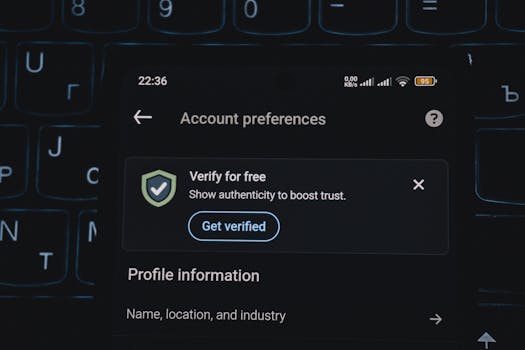In the world of fraud prevention, the “last mile” — that critical final step between identifying risk and resolving it with the customer — is broken.
We’ve seen dramatic advancements in fraud detection technology over the last decade. Machine learning, behavioral analytics, real-time monitoring — these tools are better than ever at spotting suspicious patterns and flagging anomalies. But what happens next? That last step — where a business must engage the customer to validate or block a transaction — often reverts to outdated, manual, and clunky workflows.
And that disconnect is costing the industry more than just money.
A One-Size-Fits-All Response That No Longer Fits
When a transaction gets flagged as high-risk, companies typically rely on the same four responses — none of which are built for today’s digital, high-speed consumer expectations:
- Decline the transaction outright: It’s a fast response, but often a blunt one. If the transaction is legitimate (which happens frequently due to false positives), the customer is left confused, embarrassed, and irritated — particularly if they’re standing at a register, trying to make a purchase.
- Require a step-up to authenticate the customer: Attempts to make the customer prove their identity by jumping through proverbial hoops only works in cases of fraud — when they are being impersonated by a criminal — not when the customer is being manipulated into making the payment as is typical during a scam.
- Place the transaction on hold: This creates a limbo state. The customer is stalled, often without any idea what’s happening or why. Sometimes they receive a vague notification, but most are left wondering if their card was hacked, their funds frozen, or their account shut down.
- Call the customer: This is the fallback for many fraud teams — a human-to-human check. But in 2025, people don’t answer unknown numbers, especially during work hours or when they suspect spam. Calls are expensive, time-consuming, and increasingly ineffective.
And in practice? The first three options can often still lead to the fourth. Which means every flagged transaction that’s not automatically resolved ends up in your call center queue — burning agent time, increasing costs, and frustrating customers further.
The Growing Risk Landscape
Scams and fraud are not just more common — they’re more personalized, convincing, and widespread than ever before. From phishing texts that mimic real bank messages to deepfake phone calls and social engineering schemes targeting elderly or vulnerable populations, criminals are evolving quickly.
Meanwhile, financial institutions and fintech platforms are expected to keep pace — all while offering faster payments, more open access, and real-time processing.
This creates a perfect storm: More transactions, faster rails, and smarter criminals. But the tools to respond to those flagged transactions? They’re still rooted in manual review queues, phone trees, and friction-heavy delays.
The industry can’t scale like this.
It’s Time to Fix the Last Mile
To truly protect customers and businesses, the last mile of fraud response must become as dynamic and intelligent as the systems that detect the threats in the first place. That means evolving beyond the old playbook and introducing scalable, flexible tools that meet customers where they are.
Here’s what that could look like:
- Real-time customer engagement, not reactive support: Imagine a customer getting a push notification or secure text that lets them instantly confirm or deny a flagged transaction using previously enrolled biometrics. No hold music. No call back. Just fast resolution through trusted channels.
- Intelligent workflows that adapt based on risk profile, device history, or customer behavior — so known-good users don’t face unnecessary friction, while suspicious patterns are escalated appropriately.
- Know Your Recipient verification to ensure that the individual or business on the other end of a payment is the true recipient and not using a stolen identity, taken over account, or a mule to circumvent traditional controls like confirmation of payee.
This isn’t about removing friction entirely. It’s about friction with purpose — only introduced when it enhances security without sacrificing the user experience.
Scaling the Response Without Scaling Costs
Scams and fraud don’t scale linearly — but costs do. More flagged transactions mean more calls, more agents, and more customer complaints unless something changes.
A better last mile allows your fraud operations to:
- Reduce false positives, by involving the customer quickly and intelligently
- Decrease operational overhead, by automating low-risk confirmations and surfacing only the most complex cases for manual review
- Improve customer satisfaction and retention, by transparently resolving fraud alerts without creating anxiety or delay
And ultimately, it allows your team to focus on high-value work — investigating true fraud and improving models — rather than being stuck on the phone asking, “Did you authorize this transaction?” thousands of times a week.
The Opportunity Ahead
Fixing the last mile isn’t a minor tweak — it’s a competitive advantage.
In an era where consumers can instantly move their money, loyalty is fragile. A single bad experience — like being falsely flagged and locked out of your account for hours — can send a customer packing. But a great one? Where the customer feels protected and in control? That builds trust.
Modern scam and fraud prevention isn’t just about stopping bad actors. It’s about preserving good relationships. It’s about knowing the difference between security and friction — and choosing smart, scalable systems that allow your business to grow without eroding customer experience. Financial crime may be inevitable. But the way you respond to it? That’s your differentiator.The Last Mile Problem: Responding to Scams and Fraud Need a Smarter Alternative





